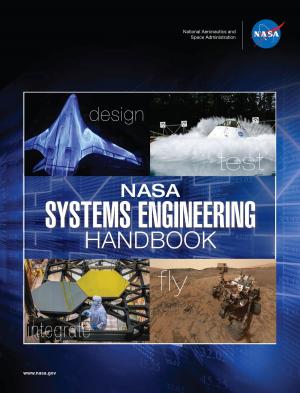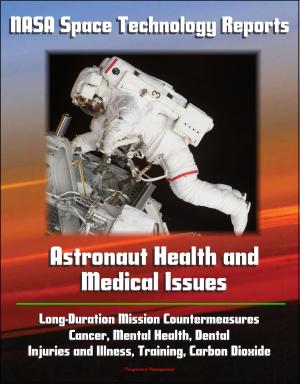NASA 50th Anniversary Proceedings: NASA's First 50 Years: Historical Perspectives
NASA's First 50 Years, Historical Perspectives
Nonfiction, Science & Nature, Technology, Aeronautics & Astronautics, Science, Physics, Astrophysics & Space Science| Author: | ISBN: | 9780160897429 | |
| Publisher: | US National Aeronautics and Space Admin | Publication: | January 27, 2012 |
| Imprint: | U.S. National Aeronautics and Space Administration | Language: | English |
| Author: | |
| ISBN: | 9780160897429 |
| Publisher: | US National Aeronautics and Space Admin |
| Publication: | January 27, 2012 |
| Imprint: | U.S. National Aeronautics and Space Administration |
| Language: | English |
PRINT FORMAT ONLY NOTE: NO FURTHER DISCOUNT FOR THIS PRINT PRODUCT-OVERSTOCK SALE -- Significantly reduced list price
On 29 July 1958, President Dwight D. Eisenhower signed the National Aeronautics and Space Act, creating the National Aeronautics and Space Administration (NASA), which became operational on 1 October of that year. Over the next 50 years, NASA achieved a set of spectacular feats, ranging from advancing the well-established field of aeronautics to pioneering the new fields of Earth and space science and human spaceflight. In the midst of the geopolitical context of the Cold War, 12 Americans walked on the Moon, arriving in peace “for all mankind.” Humans saw their home planet from a new perspective, with unforgettable Apollo images of Earthrise and the “Blue Marble,” as well as the “pale blue dot” from the edge of the solar system. A flotilla of spacecraft has studied Earth, while other spacecraft have probed the depths of the solar system and the universe beyond. In the 1980s, the evolution of aeronautics gave us the first winged human spacecraft, the Space Shuttle, and the International Space Station stands as a symbol of human cooperation in space as well as a possible way station to the stars. With the Apollo fire and two Space Shuttle accidents, NASA has also seen the depths of tragedy.
Other products produced by NASA can be found here: https://bookstore.gpo.gov/agency/550
In this volume, a wide array of scholars turn a critical eye toward NASA’s first 50 years, probing an institution widely seen as the premier agency for exploration in the world, carrying on a long tradition of exploration by the United States and the human species in general. Fifty years after its founding, NASA finds itself at a crossroads that historical perspectives can only help to illuminate.
This would be a valuable resource for scientists, engineers, students, and space enthusiasts.
PRINT FORMAT ONLY NOTE: NO FURTHER DISCOUNT FOR THIS PRINT PRODUCT-OVERSTOCK SALE -- Significantly reduced list price
On 29 July 1958, President Dwight D. Eisenhower signed the National Aeronautics and Space Act, creating the National Aeronautics and Space Administration (NASA), which became operational on 1 October of that year. Over the next 50 years, NASA achieved a set of spectacular feats, ranging from advancing the well-established field of aeronautics to pioneering the new fields of Earth and space science and human spaceflight. In the midst of the geopolitical context of the Cold War, 12 Americans walked on the Moon, arriving in peace “for all mankind.” Humans saw their home planet from a new perspective, with unforgettable Apollo images of Earthrise and the “Blue Marble,” as well as the “pale blue dot” from the edge of the solar system. A flotilla of spacecraft has studied Earth, while other spacecraft have probed the depths of the solar system and the universe beyond. In the 1980s, the evolution of aeronautics gave us the first winged human spacecraft, the Space Shuttle, and the International Space Station stands as a symbol of human cooperation in space as well as a possible way station to the stars. With the Apollo fire and two Space Shuttle accidents, NASA has also seen the depths of tragedy.
Other products produced by NASA can be found here: https://bookstore.gpo.gov/agency/550
In this volume, a wide array of scholars turn a critical eye toward NASA’s first 50 years, probing an institution widely seen as the premier agency for exploration in the world, carrying on a long tradition of exploration by the United States and the human species in general. Fifty years after its founding, NASA finds itself at a crossroads that historical perspectives can only help to illuminate.
This would be a valuable resource for scientists, engineers, students, and space enthusiasts.















